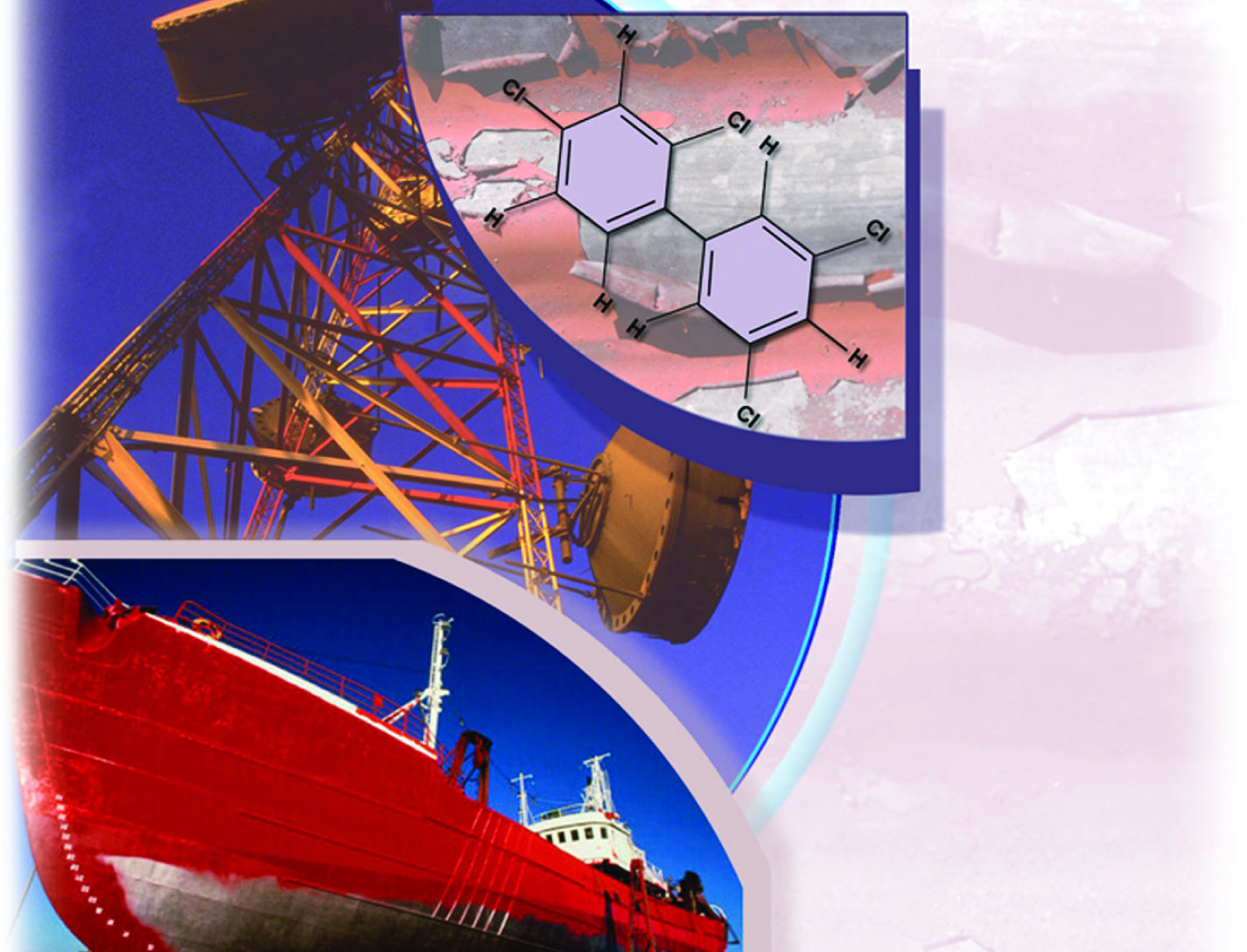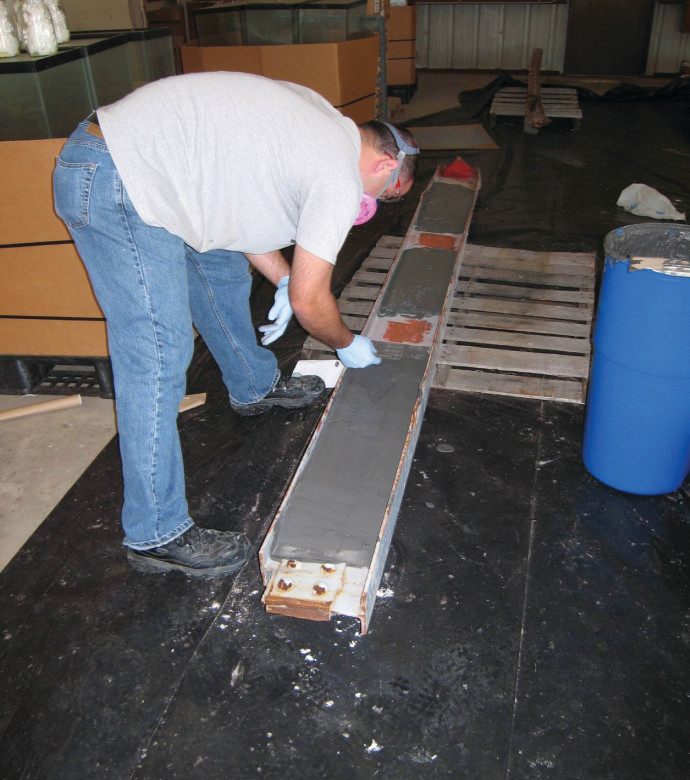Activated Metal Treatment System (AMTS) for Paints
Environment
Activated Metal Treatment System (AMTS) for Paints (KSC-TOPS-78)
A safe and effective method for removing polychlorinated biphenyls
Overview
NASA Kennedy Space Center seeks partners interested in the commercial application of the Activated Metal Treatment System (AMTS) for treating polychlorinated biphenyls (PCBs) in paints. NASAs Kennedy Space Center is offering companies licensing or partnering opportunities in the development of this innovative remediation technology.
Current physical removal methods are able to strip off PCB containing paint from surfaces (e.g., media blasting); however, these methods typically create a new waste stream that must be treated according to Toxic Substances Control Act (TSCA)regulation. In contrast, AMTS extracts PCBs and breaks them down into benign by-products while on the structure. Therefore, no additional treatment for PCBs is required. Also, because the treated surface can be reused following application, AMTS has advantages over other methods and often opens up recycling opportunities that would not have been possible prior to AMTS application.
The Technology
PCBs have been shown to cause cancer in animals and to have other adverse effects on immune, reproductive, nervous, and endocrine systems. Although the production of PCBs in the United States has been banned since the late 1970s, many surfaces are still coated with PCB-laden paints. The presence of PCBs in paints adds complexity and expense for disposal. Some treatment methods (e.g., use of solvents, physical removal via scraping) are capable of removing PCBs from surfaces, but these technologies create a new waste stream that must be treated. Other methods, like incineration, can destroy the PCBs but destroy the painted structure as well, preventing reuse.
To address limitations with traditional abatement methods for PCBs in paints, researchers at NASAs Kennedy Space Center (KSC) and the University of Central Florida have developed the Activated Metal Treatment System (AMTS) for Paints. This innovative technology consists of a solvent solution (e.g., ethanol, d-limonene) that contains an activated zero-valent metal.
AMTS is first applied to the painted surface either using spray-on techniques or wipe-on techniques. The solution then extracts the PCBs from the paint. The extracted PCBs react with the microscale activated metal and are degraded into benign by-products. This technology can be applied without removing the paint or dismantling the painted structure. In addition, the surface can be reused following treatment.


Benefits
- No impact to structure - does not affect the material beneath the paint.
- In situ - treats PCBs in place versus traditional abatement methods.
- Cost-competitive - requires none of the costs associated with placing a building under vacuum or transporting, treating, and/or disposing of a secondary waste stream.
- Effective - has been shown in lab-scale and field-scale tests to remove approximately 80% of PCBs from paint within 4 hours, and approximately 100% of PCBs within 48 hours.
- Safe - produces benign byproducts
- Versatile - an be used as a paint-on/wipe-off method for in-situ applications or as an immersion method (e.g., for dismantled parts awaiting disposal).
Applications
- Painted structures, such as buildings and ships
- Concrete surfaces contaminated by PCB-laden transformer oil
- Caulks and other adhesives
- Electrical equipment
- Soils (ex situ)
- Other PCB-contaminated debris
Technology Details
Environment
KSC-TOPS-78
KSC-12878-2-CIP
Science Direct Articles:
https://www.sciencedirect.com/science/article/abs/pii/S0045653509006055
https://www.sciencedirect.com/science/article/abs/pii/S0045653508008783
https://www.sciencedirect.com/science/article/abs/pii/S0304389411000288
Similar Results

Wastewater Treatment and Remediation
NASA's system was developed for smaller-scale, space-based applications. However, the technology is scalable for larger industrial and municipal water treatment applications. Implementation of the Ammonia Recovery System could significantly reduce nitrogen content from water treatment processes, meaningfully improving the quality of water. This system offers a novel way to reduce nitrogen water pollutants, while allowing for the nitrogen to be collected and reused- reducing environmental and public health risks and providing an environmentally friendly fertilizer option. NASAs environmental solutions work to sustain life on earth through space based technology
The adaptable nature of this system gives it potentially broad applications in a wide variety of industries; it is particularly ideal for on-site remediation of wastewater in places like condo complexes, hotels and water parks. Current methods of ammonia recovery could not meet NASAs mission requirements, so a new process was devised to optimize for high ammonia selectivity, simplicity, low volume , low power usage and zero contaminants in the effluent. To do this, NASA designed a novel regenerable struvite-formation system for the capture of ammonia. This system has three primary functions:
1) Removal of ammonia from wastewater using a media that is highly selective for ammonia
2) Capture of the ammonia for later use (e.g., as a fertilizer)
3) Regeneration of the capture media for reuse in the system

Completely biodegradable filtration system for waste metal recovery from aqueous solution
There is a significant need for an inexpensive biological approach to recover specific, targeted metals and other target materials in e-waste or other aqueous solutions that requires minimal input of resources, including energy. This invention is a method of removing or adsorbing a target substance or material, for example, a metal, non-metal toxin, dye, or small molecule drug, from solution, by functionalizing a substrate with a peptide configured to selectively bind to the target substance or material and to bind to the substrate. The substrate is fungal mycelium, and the naturally-occurring or bioengineered peptide is called a target-binding domain, which is chemically bonded to a selected solid substrate. The target chemical species binds to the target-binding domain and is removed from solution. The target can be any chemical species dissolved or suspended in the solution. Capture of the target by the substrate can isolate and allow removal of the target substance from solution, or for utilization in water filtration, or recovery of targeted chemical species from solution, particularly aqueous solution applications. The peptides used include (i) fusion peptides and/or proteins containing metal-binding domain sequence and optionally containing substrate-binding domain sequence; (ii) fusion peptides/proteins containing a metal-binding domain and a chitin-binding domain; and (iii) nucleic acids encoding fusion peptides and/or proteins containing metal-binding domain sequence. The technology enables simple scale up to a level that could be successfully implemented in an environment with limited resources, such as on a space mission or on earth in developing countries with poor access to clean water.

Smart Coating for Corrosion Detection and Protection
The smart coating is based on the controlled release of corrosion inhibitors and indicators from specially formulated microcapsules and particles pioneered by NASA (patent allowed). The coating detects corrosion in its early stages, inhibits it, and/or repairs the coating. The onset of corrosion triggers the release of compounds that indicate and inhibit corrosion. Mechanical damage to the coating triggers the release of film-forming compounds to repair the damage. In practice, the corrosion-responsive microcapsules detect the chemical changes that occur when corrosion begins and respond by releasing their contents. A corrosion indicator will identify the affected region with a color change, and healing agents and corrosion inhibitors help mitigate the corrosion.
The microcapsules can be tailored for incorporation into different coating systems. This multifunctional coating system will reduce maintenance cost and improve safety by preventing catastrophic corrosion failures. The coating can reduce infrastructure life cycle costs by extending the life of corrosion-susceptible structures and components, reduce inspection times of structures, and reduce the level of repair for corrosion-affected areas.

Polymer Composite Material
The Polymer Composite Material provides a method for using comingled plastics in a way that is not greatly impacted by changes in composition. Comingled plastics are used as a combination filler/binder material where low melting plastics are converted into binders with higher melting plastics serving as filler and structural reinforcements. The Polymer Composite Material is made by feeding the source materials into an extruder - a solid polymeric binder at a first feed rate and a solid filler at a second feed rate. The extruder (a) melts the solid polymeric binder, (b) mixes the melted solid polymeric binder with the solid filler, and (c) extrudes an extrudate of the solid polymeric binder and solid filler to form the composite material. The composite material has a binder to filler ratio determined by the first feed rate and second feed rate. The solid filler may be granular glass and the solid polymeric binder may be at least one of polypropylene, polyethylene, polyvinyl chloride, and polyethylene terephthalate. The material can be created in a range of densities using foaming techniques.

Microwave-Based Water Decontamination System
Bacterial contamination of water systems used in microgravity is a major issue for NASA because biofilms can clog or interfere with water system functions and bacterial ingestion can be harmful to astronaut health. To address this problem, NASA innovators developed a microwave based technology to purify contaminated water by eradicating and eliminating bacteria that grows in systems that generate potable water, in equipment utilizing cooling loops and heat exchangers, and removing bacterial contamination that is present on a variety of surfaces. This decontamination system is chemical free and requires minimal to no consumables.
Initial testing identified a specific microwave frequency band and exposure times for killing bacteria (Burkholderia cepacia) and biofilm. Test results show that exposing static water to microwave energy for 90 seconds can effectively kill waterborne bacteria and biofilm within a water filtration system. Additional testing, using a circulating water test bed, demonstrated that microwave energy at the selected frequency can effectively eradicate waterborne bacteria within 30 seconds. This technology could be further developed into a portable, lightweight system for use in remote locations as well as commercial space applications. The microwave decontamination system could also be added to existing water systems to extend the life of the system.



